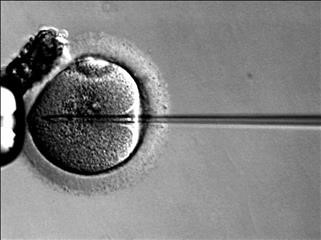The Infertility Organization
Diet for Infertility Cure
We are your source for total info and resources for Diet for Infertility Cure online.
Infertility tests for men The doctor will ask the man about his medical history, medications, and sexual habits and carry out a physical examination. Factors that Contribute to Sterility There are many factors that contribute to sterility such as age, lifestyle, physical, and environmental conditions. The sperm must provide the zygote with DNA, centrioles, and activation factor for the embryo to develop.
In some women, and especially with age, the membrane becomes harder. A Series of Monozygotic Twins Discordant for Ovarian Failure: Ovary Transplantation (Cortical versus Microvascular) and Crypreservation. (PDF, 791 KB) Human Reproduction, 2008. Chemotherapy: Some types may significantly reduce sperm count.
More Resources For Ivf Unexplained Infertility Success Stories

More Resources For Ivf Unexplained Infertility Success Stories
Irregular periods The average woman’s cycle is 28 days long. Patients with adrenal hyperplasia and other disorders must be treated with prednisone. Antibodies that attack sperm Anti-sperm antibodies are immune system cells that mistakenly identify sperm as harmful invaders and attempt to eliminate them. Physical damage to the ovaries, or ovaries with multiple cysts, may affect their ability to function.
Below are Some More Resources on Ivf Unexplained Infertility Success Stories
Sperm motility Motility is described as the percent of sperm present with flagellar motion viewed on a bright-field or phase-contrast microscope. Several days later, embryos -- or fertilized eggs -- get put back into your uterus with a device called an intrauterine insemination catheter. Moderate alcohol consumption has not been shown to lower fertility in most men, but it may affect those who already have a low sperm count. Any of the following can cause a man to have a low sperm count or abnormal sperm: Varicocele — an abnormal collection of bulging veins above the testicle; they’re the most common cause of correctable male infertility, accounting for 38% of cases Undescended testicle Infections in the testicle (orchitis), the prostate (prostatitis), or elsewhere in the body that causes a fever Chemotherapy for cancer Medicines such as anabolic steroids or anti-seizure medicines Genetic abnormalities Hormone problems In some cases, these problems can be reversed, but other times they can’t. When this is not the case, a couple facing male infertility may turn to a sperm donor or adoption to help build their family. It does not affect the couples' life only, but it also affects the healthcare services and social environment [4].
Much more Resources For Ivf Unexplained Infertility Success Stories
Clean, Intermittent Self-catheterization in the Treatment of Urinary Tract Disease. (PDF, 2 MB) The Journal of Urology, 1972. Traumatic Renal Hemorrhage Treatment by Arterial Embolization. (PDF, 3 MB) The Journal of Urology, 1973. Options for Male Infertility Treatment Some causes of male infertility are treatable or correctable through surgery. In this procedure, 5–10 mm diameter instruments (graspers, scissors, clip applier) can be introduced by the surgeon into the abdomen through trocars (hollow tubes with a seal to keep the CO 2 from leaking). In-vitro fertilization (IVF): Sperm are placed with unfertilized eggs in a petri dish, where fertilization can take place. Normal seminal fructose concentration is 120-450 mg/dL, with lower levels suggesting ejaculatory duct obstruction or absence of the seminal vesicles. For a man to be fertile, the testicles must produce enough healthy sperm to be ejaculated effectively into the woman's vagina. Risk factors for the formation of antisperm antibodies in men include the breakdown of the blood‑testis barrier, trauma and surgery, orchitis, varicocele, infections, prostatitis, testicular cancer, failure of immunosuppression and unprotected receptive anal or oral sex with men.[23][24] Sexually transmitted infections[edit] Infections with the following sexually transmitted pathogens have a negative effect on fertility: Chlamydia trachomatis and Neisseria gonorrhoeae. Secondary fertility involves one or both partners who have conceived previously, but are now unable to do so because of a possible physical or medical condition impairing fertility. However, a survey has suggested that the 3 days most likely to offer a fertile window are the 2 days before ovulation plus the 1 day of ovulation. Diverse Spermatogenic Defects in Humans Caused by Y Chromosome Deletions Encompassing a Novel RNA-binding Protein Gene. (PDF, 2 MB) Human Reproduction, 1996.
Previous Next
See also
Bangladesh Infertility Management Center Dhanmondi
Infertility Counsellor Jobs
Infertility Center in Kondapur